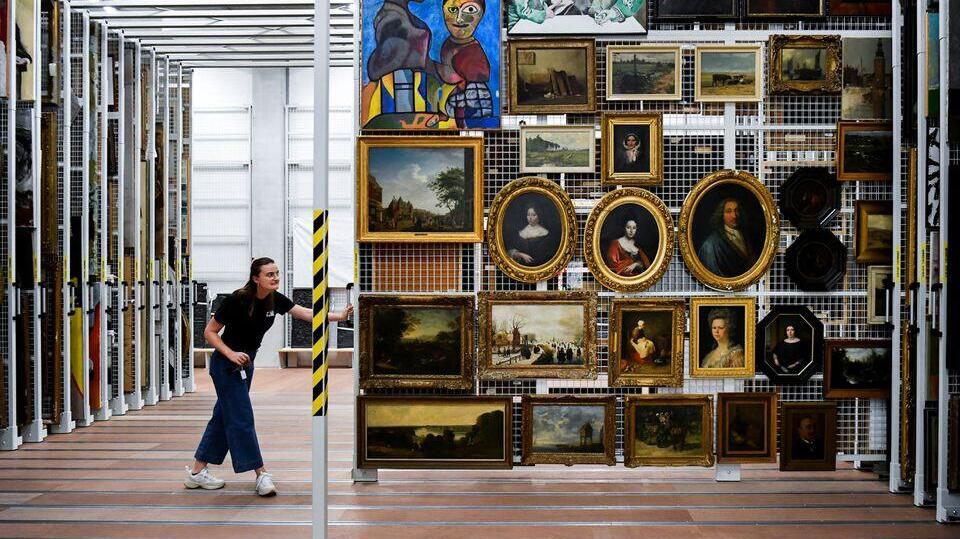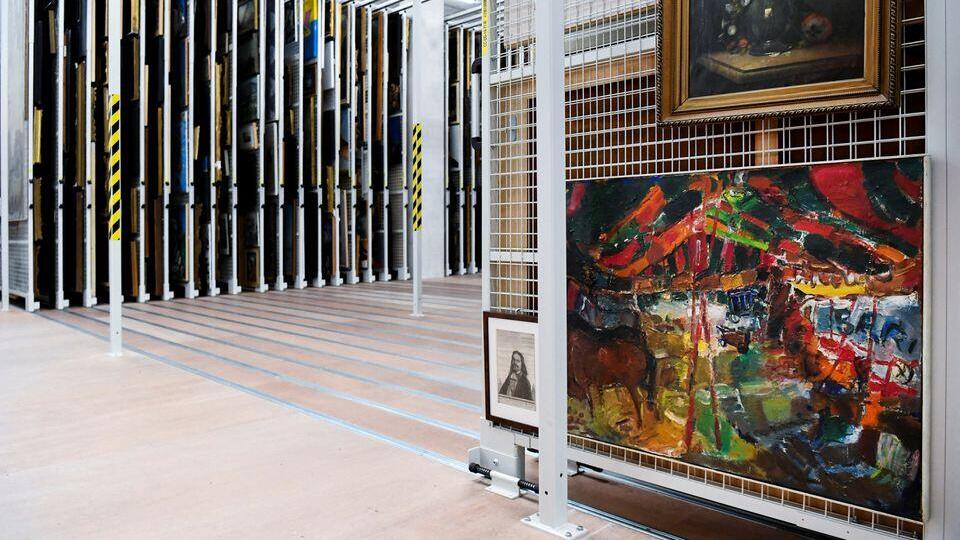For at least two decades, a painting of fishing boats under an overcast sky hung on the wall of the Dutch parliament, admired by lawmakers who gave little thought to its origins.
Now, experts are looking at whether the 19th-century masterpiece by Hendrik Willem Mesdag, "Fishing Boats off the Coast" may be Nazi-looted art.
3 View gallery


A general view of Collectiecentrum Nederland, a depot of 30,000 m2 of storage space
(Photo: Reuters)
It is part of a new review of art in Dutch museums and public places, after earlier pushes to return stolen pieces to heirs by a government-backed Restitutions Committee, which has overseen reviews of dozens of artworks since 2001.
The Cultural Heritage Agency of the Netherlands, tasked with the protection and conservation of art objects that were returned from Germany to the Netherlands after World War Two, is applying a wider definition of looted art as it seeks to return more property taken mostly from Jewish families.
"There is no free will if a family had to sell something to be able to flee to a safe country," spokesperson Dolf Muller said.
Over four years, the agency's research team will investigate 3,500 objects, 1,700 of which are paintings.
"The investigation isn't easy," said senior advisor Perry Schrier, likening the work to 80-year-old cold cases.
The Mesdag painting was sold by an unknown seller through an auction house in The Hague in 1941, a year after Nazi Germany invaded the Netherlands.
It was recovered in Germany after the war and brought back to the Netherlands, but research techniques at the time were unable to establish its origin.
Researchers now have access to new technology, better archives, digitized historical newspapers and cameras that can detect near-vanished text, Schrier said.
In the meantime, the Mesdag painting is being kept in a heavily secured depot.
Schrier said a seemingly insignificant-looking label discovered on the back of the painting that names the "Villa Erica" auction house could be a vital clue in tracking down the original owner.
"This makes my research heart beat faster," he said.
The heirs, if found, have a chance of recovering the artwork if there is proof there had been a forced sale.
"There are not many people of the first generation left," Schrier said. "We are mostly in touch with the second, the third, or even the fourth, generation." But for each family, the sentiment of receiving back looted art cannot be underestimated, he added.



